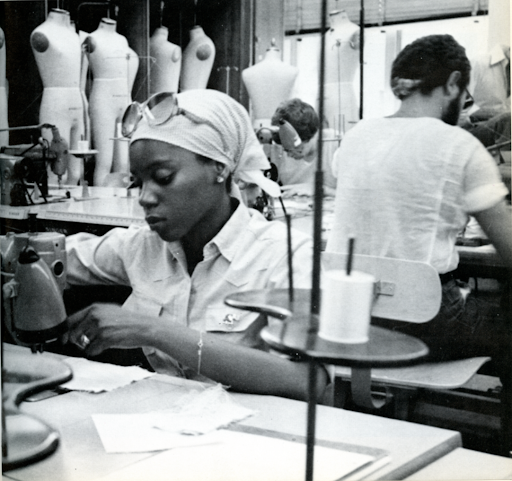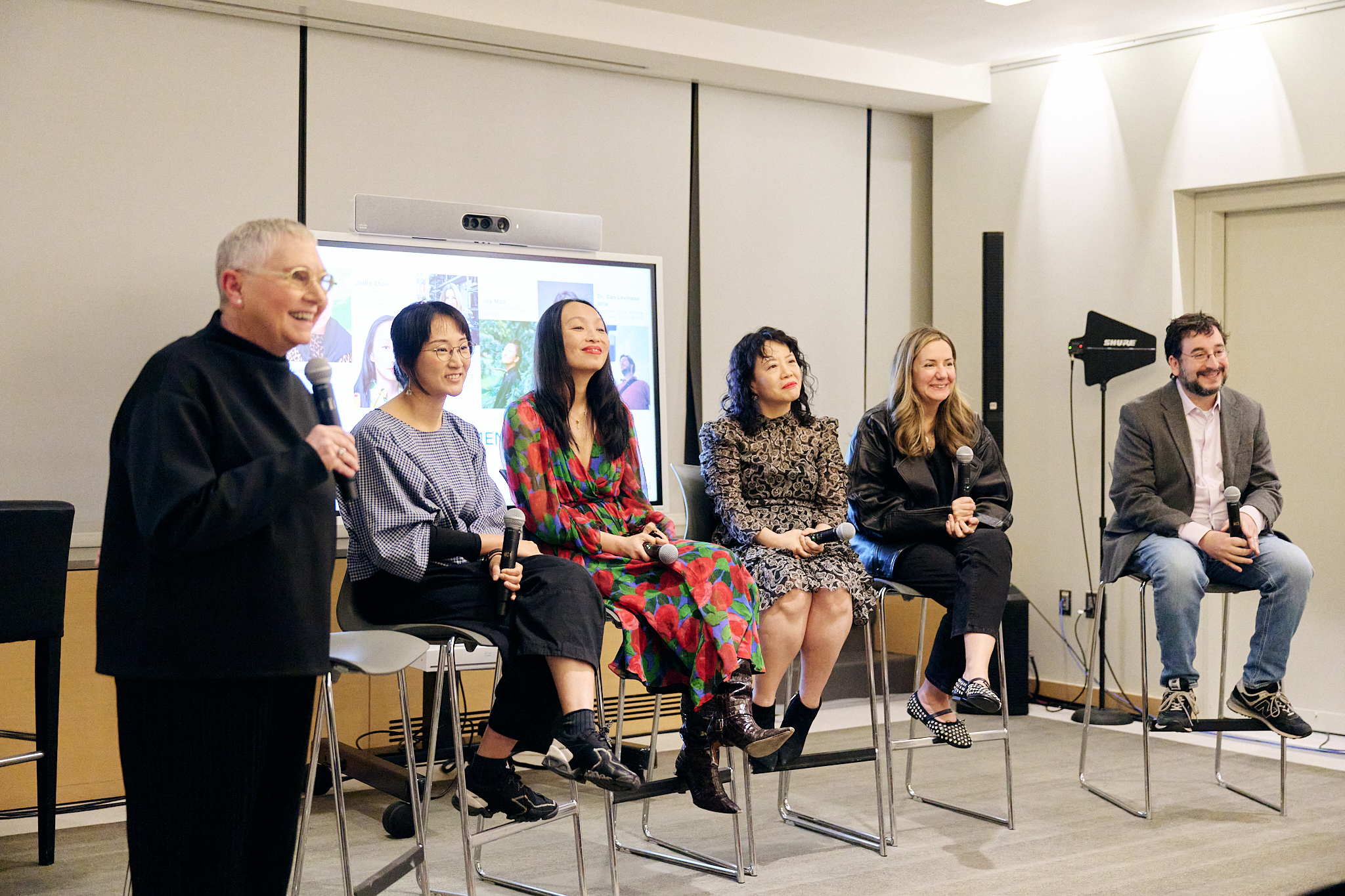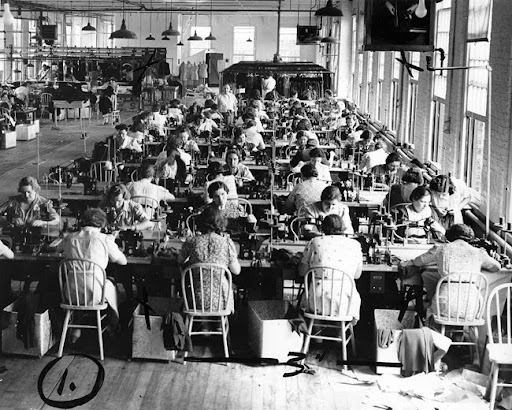
At its peak, from about 1920 to 1980, New York’s Garment District employed about 46% of the city’s labor force, mostly immigrants and women. “FIT is part of that rich history,” President Joyce F. Brown said in opening remarks for “Women of the Garment District,” a roundtable discussion on March 18. Partly to celebrate Women’s History Month, the event featured five speakers offering historical, labor-related, aesthetic, and feminist perspectives. Karen Trivette, professor and head of FIT’s Special Collections and Archives, moderated.
Today, Dr. Brown said, 83% of FIT undergraduates are women. According to some studies, only 14% of fashion companies are helmed by women, though they spend on average three times more on clothes. Only 6% of New York City’s labor remains in the district, but it still provides 180,000 jobs.

“It’s exciting to be at FIT because it’s a place where powerful women are in charge,” said Daniel Levinson Wilk, professor of Social Sciences. The infamous Triangle Shirtwaist Fire, he said, killed 146 workers, 123 of whom were women and girls. Afterward, largely female-organized protests changed the industry in ways large and small, from mandating that factory doors always open outward to creating a policy that factories have illuminated exit signs. Wilk said, “There’s a lot you can do when you get strong women together.”
Alumna Michelle King Feinberg runs the New York Embroidery Studio, the last remaining embellishment factory in New York. Trivette asked how Feinberg has maintained her business, which serves Thom Browne and Tory Burch. Feinberg said the firm embraces every possible strategy: “I love that we have turn-of-the-century technology as well as modern technology. And we automate when possible.” Feinberg has pursued federal contracts for police uniforms and other projects as more reliable revenue. “I’m passionate that I need to be here for the next generation of makers,” she said.
In the early days of the Garment Center, most workers were European, but after 1965, Asians entered the industry in significant numbers, said Kyunghee Pyun, associate professor, History of Art. Women, Pyun pointed out, are more likely to be entrepreneurs than men: “Think about the cosmetics business.”

A Covid-era epiphany led Jodie Chan, global head of communications at Carolina Herrera, to take action. Her work could be done from home; but ordinary sewers and pieceworkers were on the front lines. Chan executive produced a short video, Invisible Seams, about eight of these remarkable women. “We need to inspire students,” she said. Everyone wants to be Alexander Wang or Proenza Schouler; “but students need to fall in love with the craft of clothing. We need to encourage them, and to get more positive examples into the media.”
The W.O.W. Project, a women, queer, and trans-led initiative focusing on New York’s Chinatown, recently awarded a grant to Joy Mao. A textile artist and fashion designer, Mao is fabricating an art piece in collaboration with retired garment workers who live in Chinatown.
At the end of the program, Trivette asked each panelist to speculate about the future of the Garment District. Many of the prognostications were gloomy. Chan, for example, said, “I think creativity is facing extinction” from AI. But Mao, citing a number of grass-roots efforts to manufacture small runs of idiosyncratic styles, said she found the challenge bracing: “How exciting to hear the call to action to make something new.”
The event was sponsored by Public Safety and co-hosted by the Campus Anti-Violence Education Group and the FIT Foundation.
